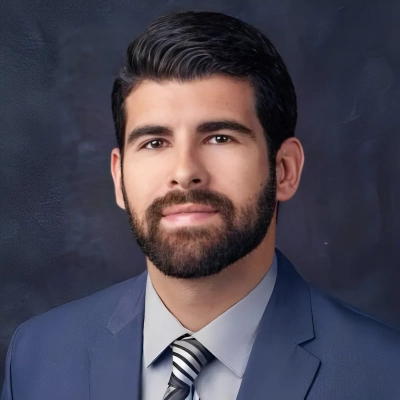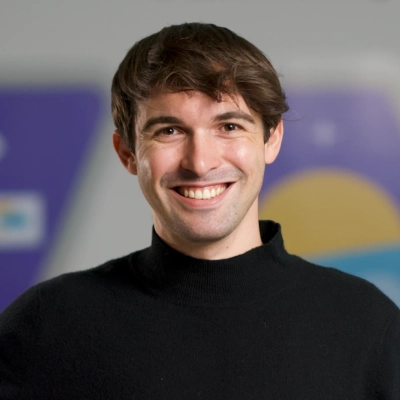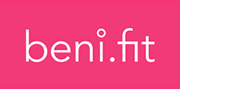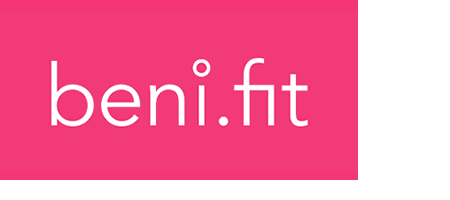Company Culture Sparks: Keys to Innovation Success
Discover the essential elements that drive innovation success in company culture. This article presents key insights from industry experts on fostering a creative and collaborative environment. Learn how to empower employees, encourage open dialogue, and transform ideas into tangible results for your organization.
- Create Safe Environment for Challenging Ideas
- Foster Cross-Functional Collaboration for Innovation
- Empower All Employees to Drive Change
- Dedicate Time for Exploration and Experimentation
- Encourage Bottom-Up Contributions and Open Dialogue
- Build Trust Through Everyday Actions
- Cultivate Psychological Safety for Creative Thinking
- Question Norms to Fuel Innovative Solutions
- Implement Open Feedback Channels for Breakthroughs
- Turn Employee Ideas into Tangible Results
- Solve Real Problems to Drive Innovation
- Grant Creative Freedom for Breakthrough Thinking
- Transform User Frustrations into Product Features
- Embrace Unusual Ideas for Valuable Solutions
- Empower Individuals Across All Levels
- Enable Cross-Functional Collaboration for Innovation
Create Safe Environment for Challenging Ideas
In my opinion, innovation doesn’t come from beanbags, ping pong tables, or “blue sky thinking” workshops. It comes from creating a culture where people feel safe enough to challenge the status quo without being shot down.
I once worked with a scaling e-commerce business where the culture had been very top-down. The founder was brilliant but had unintentionally created a climate where only his ideas made it to the table. Everyone else played it safe and, unsurprisingly, the business was stagnating.
We shifted the culture by making challenge part of the DNA. I introduced a framework where teams were expected to bring “one better way” to regular meetings — a tweak, idea, or problem-solving suggestion. Crucially, leaders had to respond with curiosity, not defensiveness. Even if the idea wasn’t viable, it was acknowledged, explored, and often sparked something else.
Within months, one of the junior team members suggested a tiny change to how abandoned cart emails were written. It was tested, refined, and ended up increasing conversion rates by 12%. That single idea paid for the entire culture project and then some.
The most crucial cultural shift? Psychological safety. Without it, you don’t get honesty, you don’t get ideas, you just get groupthink and polite nodding. When people know they can speak up without fear, that’s when you unlock creativity and innovation.
In my experience, innovation isn’t about lightning bolts of genius; it’s about creating a culture where everyday ideas are surfaced, tested, and improved. Get the culture right, and the innovation takes care of itself.
 Natalie Lewis
Natalie Lewis
Founder and Director, Dynamic HR Services Ltd.
Foster Cross-Functional Collaboration for Innovation
One of the defining aspects of our culture is encouraging every team member to challenge legacy processes and ask, “Why not?” This mindset directly led to the development of our ability to let businesses pay any supplier with a credit card — even if the supplier doesn’t accept cards. It started with a small team conversation about how restrictive and outdated traditional payment methods like ABA files felt, and quickly grew into an innovative solution that now removes a major pain point for thousands of businesses. By fostering an environment where questioning the status quo is valued, we were able to transform a common frustration into a product feature that changes how businesses manage cash flow.
The most crucial cultural factor in making this possible has been our openness to cross-functional collaboration. Engineers, product managers, and customer success teams all have a voice in shaping solutions, which means ideas are tested from multiple angles before they reach our customers. This culture of inclusivity not only accelerates creativity but also ensures the innovations we bring to market are practical, user-centric, and impactful.
 David Grossman
David Grossman
Founder & Chief Growth Officer, Lessn
Empower All Employees to Drive Change
One instance where our company culture directly led to innovation was when we noticed early shifts in how Google’s map pack rankings and AI-driven search results were evolving. Because of our culture, we didn’t wait for problems to hit us — we proactively dug in to figure out how to adapt before most competitors were even paying attention.
At the core of this is our belief that it’s everyone’s job to identify and solve problems. We don’t silo innovation to a single department or a leadership role. When a team member spots something changing in the search landscape, they feel empowered to bring it up, research it, and work with others to test solutions.
Equally important, we’ve instilled the mindset that it’s everyone’s job to be a lifetime learner. This means our team is constantly reading, testing, and experimenting with new SEO tactics. Because of these two cultural principles, we’ve been able to stay ahead on critical trends — like cracking how to rank in Google’s map pack or positioning clients to show up in AI-powered search results.
The most crucial aspect of our culture is that ownership of innovation doesn’t belong to one person — it belongs to everyone. That shared responsibility keeps us agile and ensures creativity isn’t optional; it’s built into how we operate.
 Tom Malesic
Tom Malesic
CEO, EZMarketing
Dedicate Time for Exploration and Experimentation
Innovation is an integral part of our rhythm. One of the most impactful ways our culture supports this is through Lab Day, a dedicated day each month for our team to step away from client work and explore new ideas. We experiment, build, test, and wrap it all up with a show and tell. Some of our strongest internal tools and client-facing features started as Lab Day sparks.
This kind of cultural permission to play is essential. It creates safety for risk-taking, space for imagination, and a cadence for progress. We’re not waiting for perfect conditions. We’re building curiosity into our workflow.
Out of this process, we built several products including an award-winning app that received over 1 million downloads and global visibility.
We openly share our process. Our 4-Week Guide for Digital Innovation gives teams a starting point to move from idea to validated solution. It’s free and available online.
Creativity doesn’t happen by accident. It grows in environments where people are trusted to try. We don’t just talk about innovation. We create the conditions for it to thrive.
 Sheryle Gillihan
Sheryle Gillihan
Co-Owner, CauseLabs
Encourage Bottom-Up Contributions and Open Dialogue
I am confident that one of the clearest examples of our culture driving innovation occurred during a hackathon-style internal event we call Innovation Sprints. These are quarterly sessions where teams step outside of client work to explore bold ideas.
In one of these sprints, a group of junior engineers proposed automating part of the data labeling process for our geospatial ML projects. At first, it sounded like a side experiment, but because our culture encourages bottom-up contributions and doesn’t confine innovation to senior leadership, we gave them room to test it. Within weeks, their prototype evolved into a semi-automated labeling tool that cut project preparation time nearly in half. That tool is now embedded in our delivery pipeline.
The cultural aspect that mattered most here was psychological safety — the sense that even if an idea failed, it would still be valued. Without that, those junior engineers might never have spoken up.
The lesson for me as CEO is that culture isn’t about posters or slogans; it’s about creating an environment where every voice can spark a breakthrough. In our case, that openness literally became a competitive advantage.
 Naresh Mungpara
Naresh Mungpara
Founder & CEO, Amenity Technologies
Build Trust Through Everyday Actions
We’ve noticed that creativity usually shows up when people feel safe enough to speak their minds. One project really highlighted this. The timeline was tight, and instead of waiting on formal meetings, a handful of developers and designers pulled into a room and started tossing around rough ideas. What came out of that session was a new way to structure the code. It saved us time and made the final product more stable.
That didn’t happen by chance. A big part of our culture is making sure people don’t feel judged for sharing an unfinished thought. When someone throws out a half-formed idea, others can pick it up and shape it into something useful. That freedom is what led to the breakthrough.
We also expect leaders to be in the mix, not just giving directions. When managers brainstorm with the team as equals, it signals that hierarchy isn’t in the way. Even the most junior voice carries weight.
For us, creativity doesn’t come from perks or slogans. It comes from trust, and trust is built in small, everyday actions crediting people, asking questions, and giving space to experiment.
 Vikrant Bhalodia
Vikrant Bhalodia
Head of Marketing & People Ops, WeblineIndia
Cultivate Psychological Safety for Creative Thinking
One clear instance of culture driving innovation was when we launched a new interactive author workshop series. It came from casual brainstorming sessions where team members from different departments — editing, marketing, and ghostwriting — shared ideas openly. Because everyone felt comfortable contributing, someone suggested combining live author sessions with digital storytelling exercises, which became a unique service offering.
The aspect of our culture that made this possible is psychological safety. Team members know their ideas are valued, even if they seem unconventional at first. We celebrate curiosity and encourage experimentation without fear of failure.
This openness generated innovative solutions and strengthened team cohesion. For other founders, my tip is to cultivate a culture where ideas can be shared freely and tested quickly. Innovation often comes from collaboration and trust, not just individual brilliance. So, creating that environment is what allows creativity to flourish naturally.
 Kritika Kanodia
Kritika Kanodia
CEO, Estorytellers
Question Norms to Fuel Innovative Solutions
Innovation came directly from our culture of questioning what others accept as “normal.” Early on, I challenged why marketing still relied on small sample surveys to represent millions of voices. That frustration became fuel, and our team built a platform that measures creator influence and consumer sentiment down to the zip code.
The most crucial aspect of our culture is that we reward bold thinking. We do not shut down uncomfortable questions; we chase them. That openness turned a simple challenge into technology that helps brands connect with communities authentically and at scale.
 Taylor Humphries
Taylor Humphries
CEO, Ranked
Implement Open Feedback Channels for Breakthroughs
The biggest breakthrough in my company came from our open feedback culture. Every single employee, whether in sales, tech, or operations, has a direct channel to propose changes without layers of approval blocking the way. That environment led to the idea of a 9-day onboarding process for businesses switching PEOs.
The fact is, most companies stall because good ideas get buried under hierarchy. When you strip away the fear of being ignored or punished for speaking up, creativity floods in. I mean, employees who know their input will actually be tested are far more willing to contribute fresh thinking. This type of culture keeps innovation constant, not occasional. Clients feel it too, because the improvements touch their experience directly. No doubt, listening with action behind it is the real competitive edge.
 Guillermo Triana
Guillermo Triana
Founder and CEO, PEO-Marketplace.com
Turn Employee Ideas into Tangible Results
Our culture of openness directly sparked an innovation that reshaped a client project. During a routine team review, a junior consultant suggested using Zendesk’s AI features in a way we hadn’t considered — automating intent detection tied to loyalty program data. Instead of dismissing it, we tested the idea, and it worked, cutting response times significantly. The most crucial aspect was psychological safety: people felt free to share unpolished ideas, knowing they’d be heard. That openness turned into a tangible client win.
 Paul Bichsel
Paul Bichsel
CEO, SuccessCX
Solve Real Problems to Drive Innovation
Our culture prioritizes franchise owners over quick fixes, anchored in solving practical, everyday challenges rather than pursuing trends. This focus enabled innovation when we built our AI-powered CRM. Instead of superficial features, we addressed the real pain points of franchise owners such as data inconsistencies, wasted time, and slow lead response. The result was a platform built for concrete results with faster follow-ups, cleaner data, and higher close rates. The key cultural factor was our bias for execution as we tested solutions directly with users instead of seeking publicity. Innovation was not a tagline. It was the outcome of solving real operational challenges.
 Alex Smereczniak
Alex Smereczniak
Co-Founder & CEO, Franzy
Grant Creative Freedom for Breakthrough Thinking
Our implementation of company-wide passion projects has been a significant driver of innovation within our organization. These projects grant our team members 100% creative freedom to experiment with ideas that aren’t tied to client deliverables or immediate financial returns. The company actively invests time and resources to support these initiatives, creating a safe space for exploration beyond conventional boundaries. This culture of empowerment and creative autonomy has proven crucial in fostering breakthrough thinking, allowing us to pivot toward innovative solutions we might never have discovered through our standard workflows.
 Ryan Stone
Ryan Stone
Founder & Creative Director, Lambda Animation Studio
Transform User Frustrations into Product Features
Most of our AI-friendly features weren’t born in a boardroom. They sparked from a social media user’s frustrations, such as, “I perfected my resume, but now I’m stuck staring at a blank page for a cover letter.”
Our culture of hands-on involvement and creative freedom turns these pain points into innovation. Every team member, from community managers to developers, dives deep into user feedback, feeling their struggles firsthand.
When our people, whether a manager or a newcomer, spot a comment, they don’t just note it. They pitch a game-changing product feature. Our flat hierarchy lets ideas shine, with no titles needed. The result? Beloved innovations that save job seekers time and stress.
Innovation bubbles up from empathy, trust, and freedom, proving great ideas come from listening closely and acting boldly.
 Andrei Kurtuy
Andrei Kurtuy
Co-Founder & CMO, Novorésumé
Embrace Unusual Ideas for Valuable Solutions
Our Slack channel #random-ai-ideas allows team members to share any idea, no matter how unusual it seems. A team member shared the concept of using GPT for automatic call summary generation on that Friday, which led to an immediate weekend development sprint. The team developed a functional prototype by Monday, which resulted in time savings of multiple hours per week for one of our clients through automated reporting.
The fundamental cultural aspect of our organization involves allowing team members to explore different ideas without any form of penalty. Team members who divert from their tasks to create unusual AI bots will discover valuable solutions instead of following the planned roadmap. Our team creates most of its valuable tools through the freedom to experiment and try new things.
 Vincent Carrié
Vincent Carrié
Co-Founder, Zaturn
Empower Individuals Across All Levels
Reflecting on my journey with FedEx, there was a particular instance when our corporate culture significantly led to innovation. What stands out to me is the time when our team was tasked with optimizing the package tracking system. This wasn’t just about making incremental improvements; the challenge was to rethink the entire system architecture to anticipate future demands.
In this environment, what truly fostered creativity was our culture of openness and collaboration. There’s a strong emphasis on cross-functional collaboration and truly listening to everyone at the table, regardless of their role or seniority. During this project, we brought together team members from IT, operations, and customer service. Each group brought a unique perspective, which was crucial in understanding the multifaceted nature of our problem.
One specific moment I recall vividly: during our brainstorming sessions, a junior developer suggested leveraging machine learning algorithms to predict package movements in real time. It was a fresh perspective that initially seemed ambitious. However, our culture doesn’t just allow ideas to surface; it supports nurturing them. Encouraged by our team’s open discussions and no-fear approach to trial and error, we piloted the concept. The results were astounding, significantly reducing delays and improving package management accuracy.
I believe the most crucial aspect of our culture that fosters such innovation is the empowerment of individuals. You’re not just part of a cog; you’re valued for your insights and contributions. My role as a Solutions Architect often places me at the intersection of technology and business strategy. It’s a position that benefits from the dynamic and inclusive culture FedEx champions.
In my view, culture acts as the bedrock for any innovative endeavor. When a company like FedEx cultivates a sense of ownership and encourages creative risk-taking, it naturally leads to breakthrough ideas. It’s not just about celebrating big wins, but also about appreciating the process of learning from what doesn’t work initially. That iterative approach, backed by a supportive culture, has been key to driving our innovations forward, cementing FedEx’s reputation for reliability and forward-thinking solutions.
 MAHESH KUMAR GADDAM
MAHESH KUMAR GADDAM
Solutions Architect
Enable Cross-Functional Collaboration for Innovation
One time our culture really pushed innovation forward was when we ran a one-week product sprint and invited everyone — marketing, design, and tech — to join. Because we set up an open workspace, no one had a separate “special” zone, and everyone shared ideas. The best part? We came up with a new feature that customers loved, all because none of us cornered our own “safe” zone and just tossed ideas over a wall.
The secret ingredient was psychological safety. Anyone could say, “What if we did this crazy thing?” and know nobody would smirk or shoot it down. That freedom coaxed new thoughts to life, and we could tackle problems without the usual hand-wringing or second-guessing.
In the end, it was the mix of working together and trusting each other that turned good ideas into great ones. The sprint proved that culture isn’t just a poster; it’s the tough rubber shim that holds everything still while creativity dances on top.
 Luke Hickman
Luke Hickman
Chief Marketing Officer, Bird Digital Marketing Agency USA


